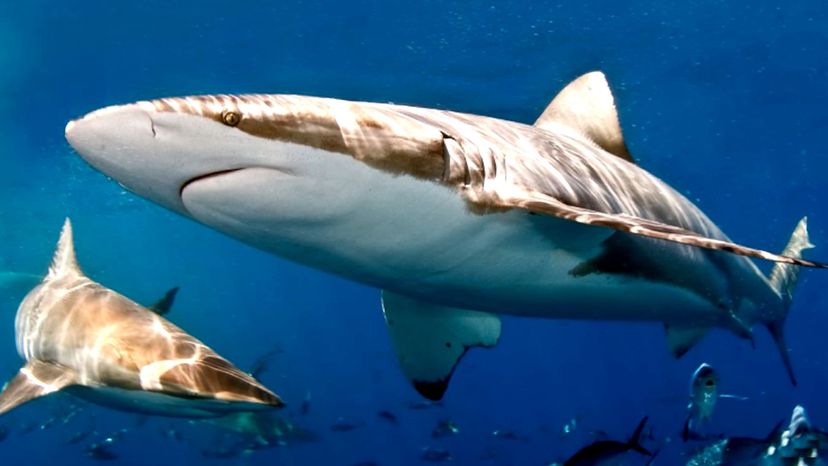
Image: Shutterstock
About This Quiz
Thousands of people each year lose their lives to dangerous land and sea creatures. Do you think you could pick out which animals are dangerous just from an image? Take this quiz to find out.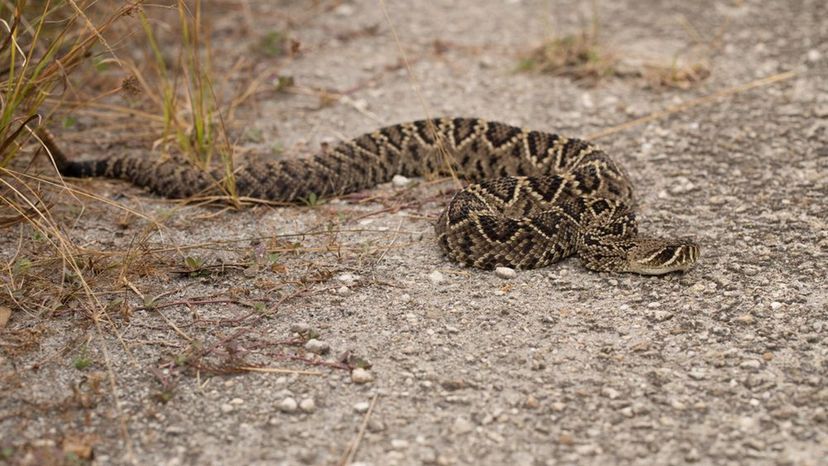
shutterstock
Which dangerous reptile is shown in this image?
Burmese Python
Jamaican Boa
Eastern Diamondback Rattlesnake
The eastern diamondback is one of the most venomous snakes and the largest rattlesnake in North America. It is not a girl's best friend, as a bite from this snake is painful and its venom kills red blood cells. However, death is rarely a result, as antivenin is widely available.
Warren's Girdled Lizard
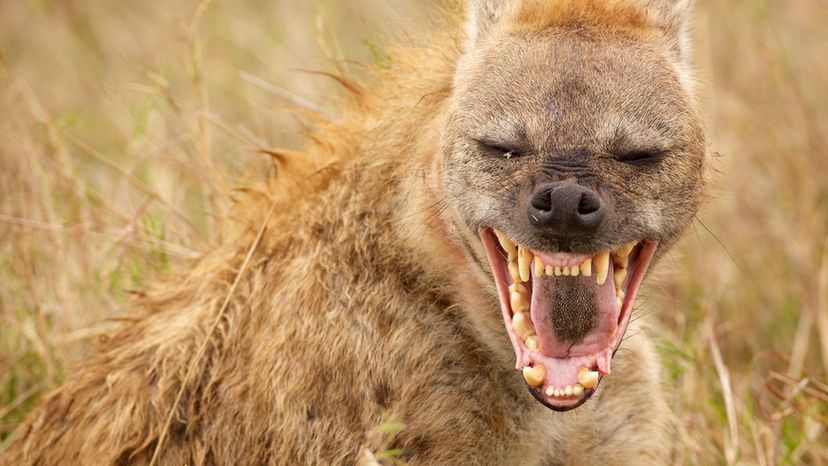
n/a
Which dangerous animal is shown in this image?
Wolf
Clouded Leopard
Lion
Hyena
Hyenas are found in Africa and possess a sturdy build. They can weigh between 90 -and190 pounds. They mature at 3 years old with the females being larger than the males. Hyenas can live up to 25 years in the wild and are social animals.

shutterstock
Which dangerous animal is shown in this image?
Jackal
Hippopotamus
Also known as the hippo, this massive animal can be found in lakes, rivers and wetlands. They are thought of as herbivores, but they have been observed scavenging meat. They grow up to 13 feet long and can weigh a whopping 3.5 tons. The female will give birth to one calf after eight months that weighs nearly 100 pounds.
Killer Whale
Liger
Advertisement

shutterstock
Which dangerous reptile is shown in this image?
New Caledonia Gecko
Savannah Monitor
Cuban Crocodile
The Cuban crocodile is very picky about its habitat. It can only be found in the Zapata Swamp and in the Lanier Swamp of Cuba.
McCord's Box Turtle
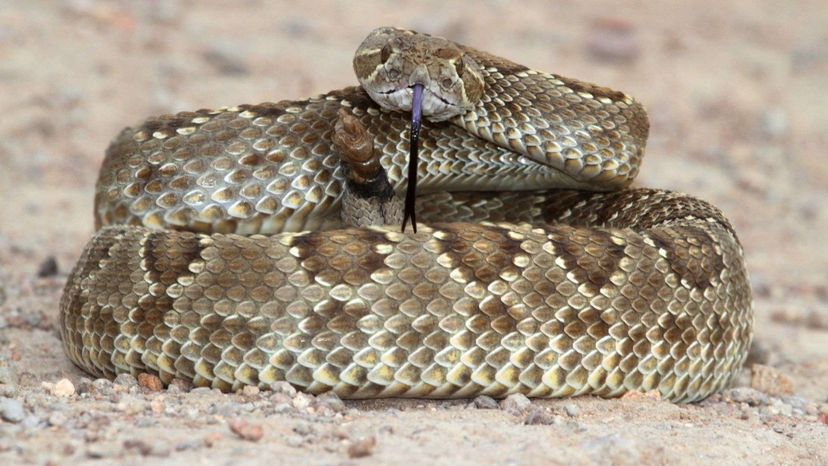
Shutterstock
Which dangerous reptile is shown in this image?
Hydrophis Belcheri
Fer-de-lance
Bothrops Jararaca
Mojave Rattlesnake
The Mojave Rattlesnake has the most potent venom of any rattlesnake in North America. Its venom is about 16 times more toxic than that of the Sidewinder and surpasses even that of the Tiger Rattlesnake. It can be particularly aggressive to humans and is quick to defend itself if disturbed.
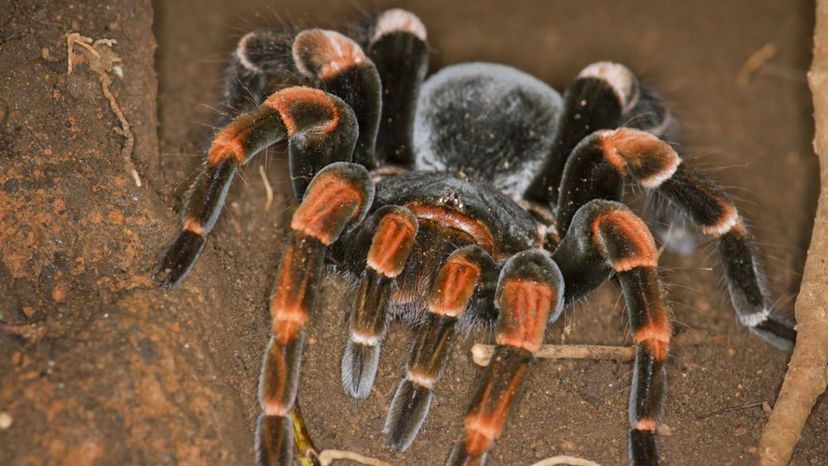
Shutterstock
Which dangerous spider is shown in this image?
California Trapdoor Spider
Banded Garden Spider
American House Spider
Mexican Orange-Kneed Tarantula
This very large and very hairy spider is both endangered and protected. The males have longer legs than the females but as is typical of most spider species, they have smaller bodies.
Advertisement
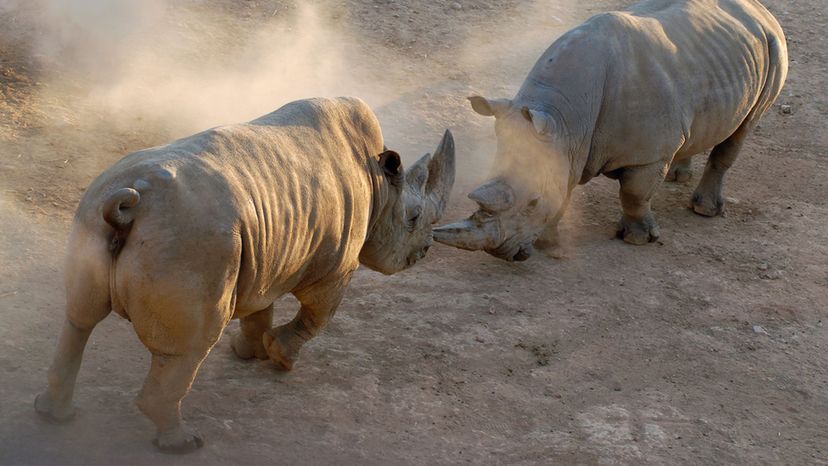
n/a
Which dangerous animal is shown in this image?
Rhinoceros
Rhinoceros, also known as rhino, have hard thick skin and two large horns. They are herbivores and eat grass, berries and leaves. They are an endangered species as they are poached for their horns, used for medicinal purposes in the Far East. Rhinos are aggressive and will charge towards predators if threatened. They can live to 40 years old and are very solitary animals.
Fox
Electric Eel
Shark

shutterstock
Which dangerous animal is shown in this image?
Sun Bear
Scorpion
Scorpions are found worldwide. They are eight-legged arthropods, closely related to spiders. They are identifiable by their big front pincers and curved stinger tail. Scorpions eat spiders, insects and small rodents, which they paralyze by using the stinger at the end of the tail.
Arctic Black Bear
Polar Bear
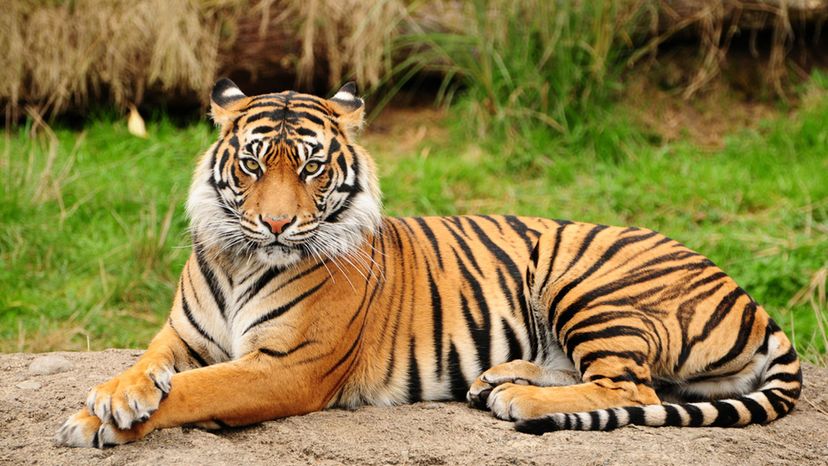
n/a
Which dangerous animal is shown in this image?
Panther
Sea Lion
Bengal Tiger
The Bengal tiger is an endangered species, due to deforestation and hunting. They are the second largest tiger found in the world after the Siberian tiger. The Bengal tiger is a carnivore and has few natural predators, because of its sheer size and strength. They can weigh as much as 550 pounds.
Uakari
Advertisement
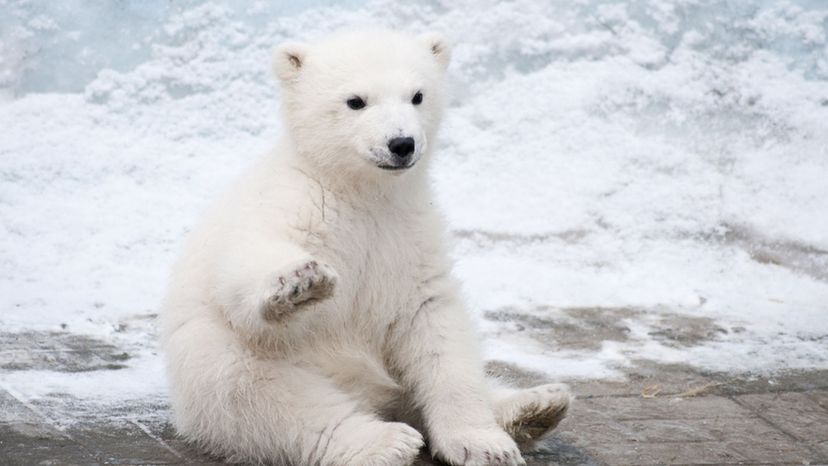
shutterstock
Which dangerous animal is shown in this image?
Bull Shark
Polar Bear
Polar bears can only be found in and around the Arctic Ocean. They are big with clear white fur, although their skin is actually black underneath. Polar bears are carnivores and eat sea birds, seals and walruses. They are very vulnerable, due to the melting ice caps, and may be extinct in the next 20 to 30 years. Polar bears have a lifespan of 30 years in the wild. Males can weigh over 2,000 pounds
Tiger Shark
Hammerhead Shark
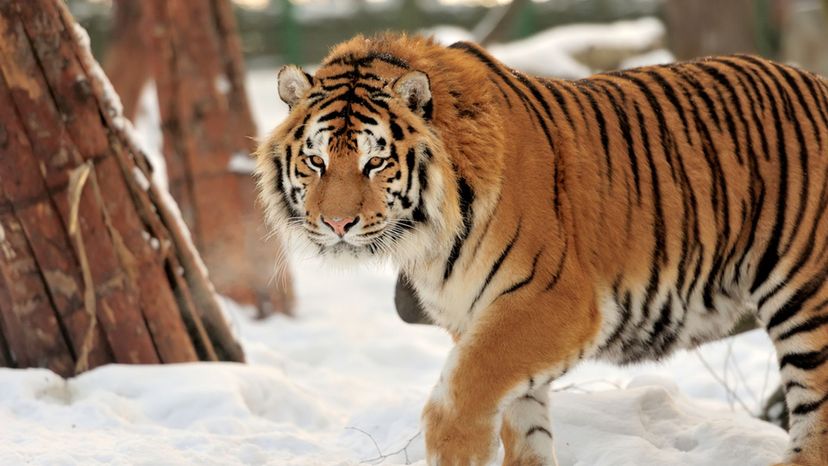
n/a
Which dangerous animal is shown in this image?
Siberian Tiger
The Siberian tiger has thick striped fur that protects it from the snow and cold. The female will give birth to as many as six cubs after three to four months of gestation. Newborn Siberian tiger cubs are born blind and completely helpless.
Mandrill
Numbat
Otter
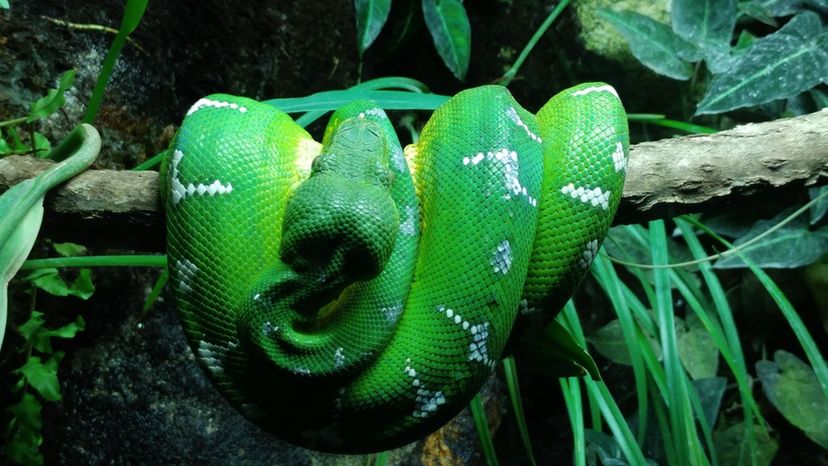
shutterstock
Which dangerous reptile is shown in this image?
Brazilian Rainbow Boa
Black Rat Snake
Emerald Tree Boa
This beautiful green boa can be found in South America. Although its distinctive color gives it great attention among enthusiasts, it is actually red when it first hatches.
Osage Copperhead
Advertisement

Shutterstock
Which dangerous animal is shown in this image?
Shark
Whale
Lion
Lions live in small groups known as prides. Male lions are very distinctive, with long, thick manes. These cats live up to 14 years in the wild, weighing up to 420 pounds. The average litter size is between 3 and 6 cubs. These cubs will spend most of the day playing, which helps them prepare to hunt and fight when they are older.
Octopus
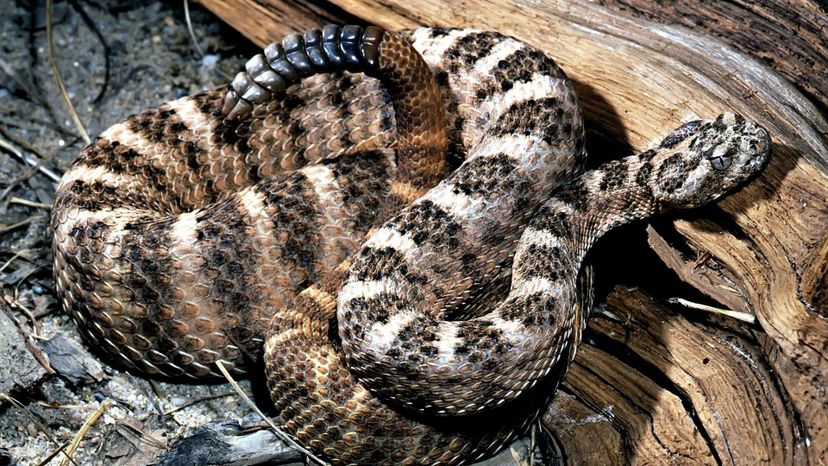
Shutterstock
Which dangerous reptile is shown in this image?
Chinese Cobra
Malayan Krait
Tiger Rattlesnake
The intriguing look of a Tiger Rattlesnake comes from colors varying from bluish gray to lavender, or even buff-colored. Their sides and underbelly can be orange, pink or cream in color.
Common Death Adder
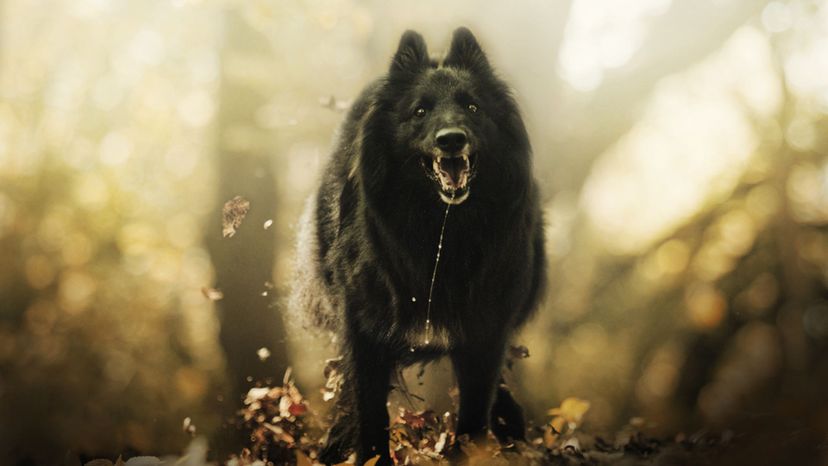
Shutterstock
Which dangerous animal is shown in this image?
Hyena
Wolf
The average lifespan of a wolf in the wild is 6 to 8 years. They are pack animals and are led by the alpha male and his alpha female. The female will decide where the den will be. In large packs, there is sometimes a second male that will help to lead, known as the beta male. Wolves communicate with each other through howling.
Puffer Fish
Black Mamba
Advertisement

Shutterstock
Which dangerous animal is shown in this image?
Owl
Eagle
Falcon
Elephant
Elephants can spend up to 16 hours a day eating. They have big floppy ears, a long trunk and two large tusks. The tusks are ivory, which makes the elephant a very desirable animal for poachers. Elephants can live up to 70 years. They have knee joints but they are not able to jump because of their sheer size and the build of their legs.
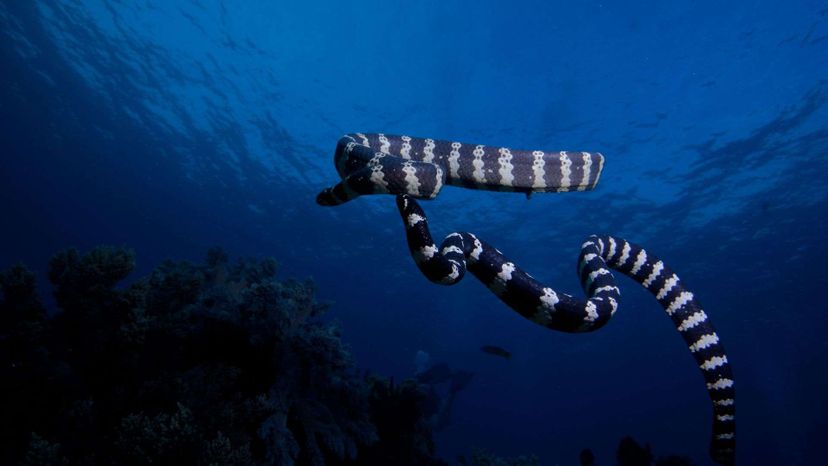
Shutterstock
Which dangerous reptile is shown in this image?
Indian Cobra
Rhinoceros Viper
Mojave Rattlesnake
Black-Banded Sea Krait
Similar to land snakes, the Black-Banded Sea Krait has scales, a forked tongue, and lidless eyes - and it breathes air. Because it spends the majority of its time under water, it differs from land snakes, however, having a short, flattened tail which propels it quickly when swimming.
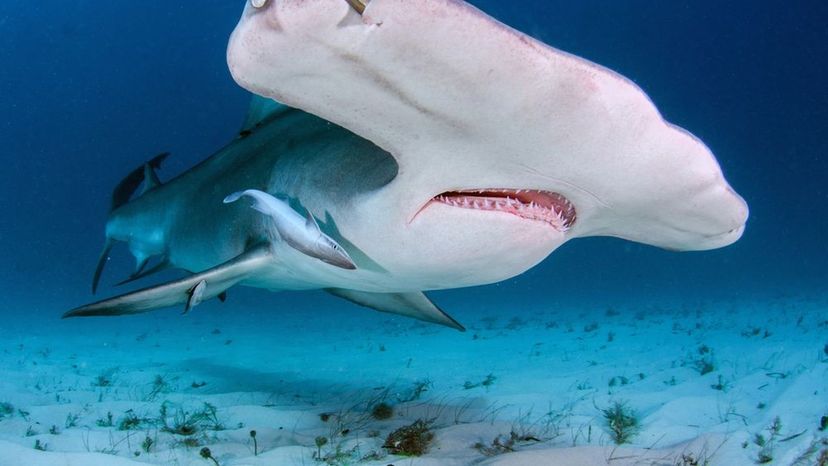
shutterstock
Which dangerous shark is shown in this image?
Cow Shark
Great Hammerhead
Great hammerhead sharks have flat, T-shaped heads that make them stand out from other sharks. With eyes on the outside of the hammer-shaped head, this shark has a wider, more enhanced visual range. This shark can grow to 20 feet in length!
Bramble Shark
Dogfish
Advertisement
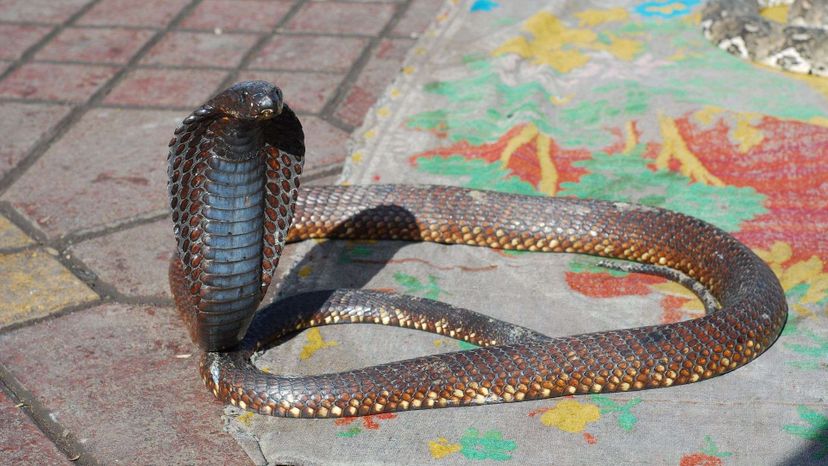
WikiCommons
Which dangerous reptile is shown in this image?
Black Mamba
Egyptian Cobra
The Egyptian Cobra, also referred to as Cleopatra's Asp, is rumored to have gotten its name after Cleopatra committed suicide with the venom of the Egyptian Cobra. She most likely chose this snake because it has unusually quick-acting, deadly venom.
Malayan Krait
Gaboon Viper

n/a
Which dangerous animal is shown in this image?
Jellyfish
Shark
Grizzly Bear
The grizzly bear was recently removed from the endangered species list. This bear is territorial and very aggressive. It is an omnivore, eating mostly fish and fruit. The grizzly can grow to 8 feet tall and weigh up to 800 pounds. They have a lifespan of 15 to 25 years in the wild, although few young cubs will actually make it to adult size.
Whale
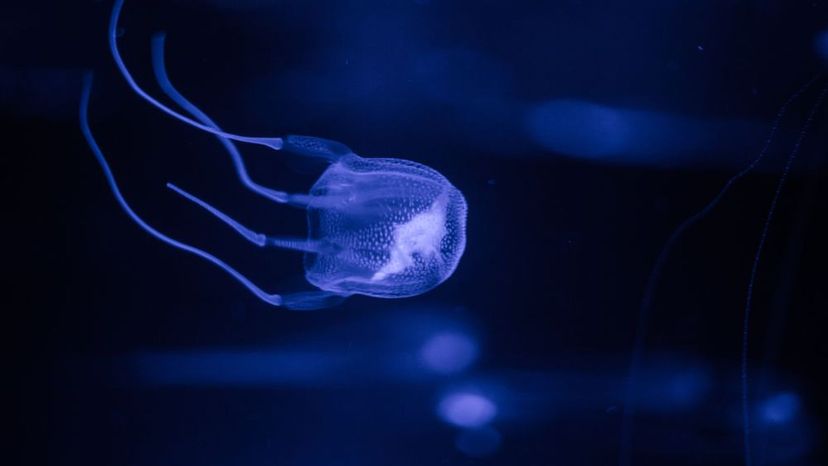
Shutterstock
Which dangerous animal is shown in this image?
Wasp
Raccoon
Lion
Jellyfish
Jellyfish are boneless animals that float in the ocean. They can be a number of different colors from white, pink, yellow, green, purple, orange, red and blue. The body of a jellyfish is mainly water, and a skin that surrounds it is not very thick. They do not have a very long lifespan and will live to about one year maximum.
Advertisement
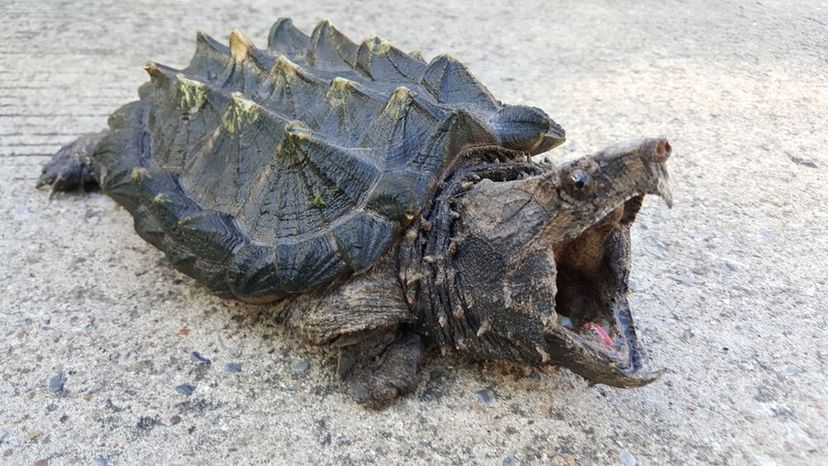
shutterstock
Which dangerous reptile is shown in this image?
Alligator Snapping Turtle
The Alligator Snapping Turtle is one of the largest freshwater turtles in the world. They are prey to no animal other than humans, but they are captured by humans to eat and trade as exotic pets. These turtles can live 20 to 70 years.
Gopher Tortoise
Box Turtle
Brazilian Rainbow Boa
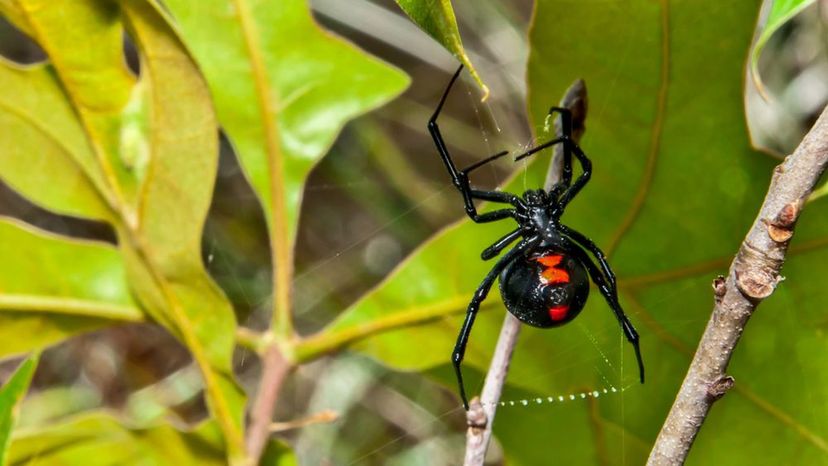
Shutterstock
Which dangerous spider is shown in this image?
Mexican Orange-Kneed Tarantula
Hacklemesh Weaver
Marble Orb Weaver
Black Widow
The venom of the Black Widow Spider is said to be up to 15 times as strong as that of a rattlesnake. A healthy adult will most likely not die from being bitten by a Black Widow, however, small children, the elderly, and sick people may not fare so well.
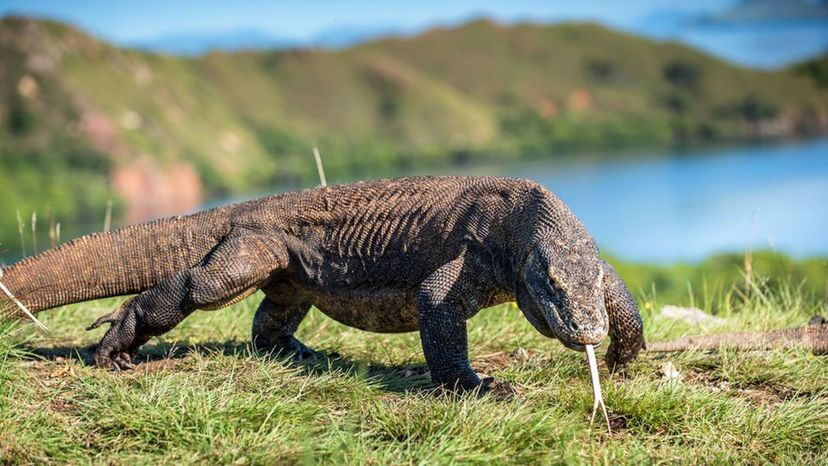
Shutterstock
Which dangerous animal is shown in this image?
Warthog
Wild Boar
Aardvark
Komodo Dragon
Komodo dragons are not only one of the largest lizards, but also among the most aggressive. They are only found on a few islands in Indonesia. These are very big reptiles that can grow up to 10.3 feet in length and weigh as much as 360 pounds. They are carnivores and prey on pigs, deer and water buffalo. They will even eat humans and other Komodo dragons. They live up to 30 years in the wild.
Advertisement
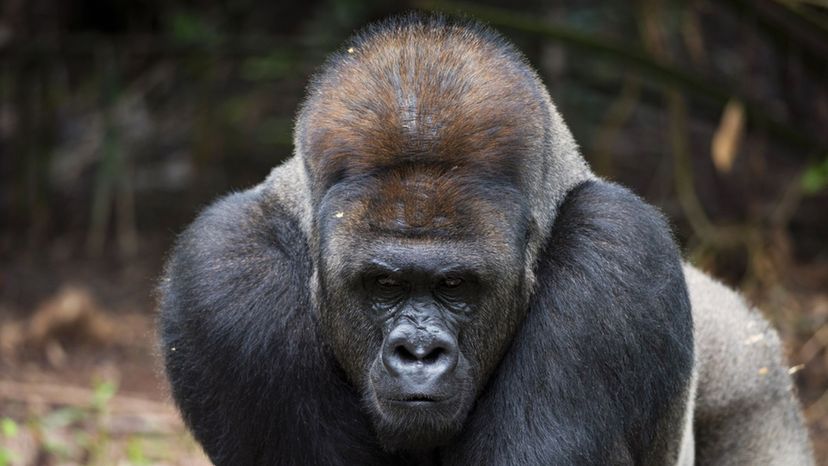
shutterstock
Which dangerous animal is shown in this image?
Manta Ray
Eastern Lowland Gorilla
Gorillas are a threatened species because of deforestation and poaching for their meat. Despite their size, Gorillas are not aggressive and will only attack when feeling threatened. Gorillas are herbivores and eat berries, fruits, and flowers. They grow up to nearly 6 feet tall and can weigh up to 350 pounds.
Piranha
Puma
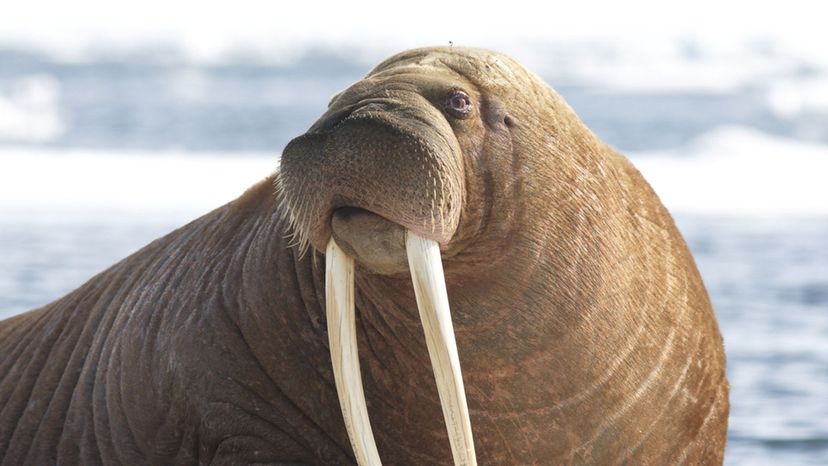
Shutterstock
Which dangerous animal is shown in this image?
Walrus
The walrus is a carnivore that eats a variety, including shellfish, worms, and snails. They can live up to 40 years and weigh up to 2,200 pounds. They only have one pup at a time who will stay with them for 2 years. They have two big front tusks that can grow up to 39 inches long. Walrus can be found in the cold Arctic waters.
Siafu Ants
Cape Buffalo
Elephant
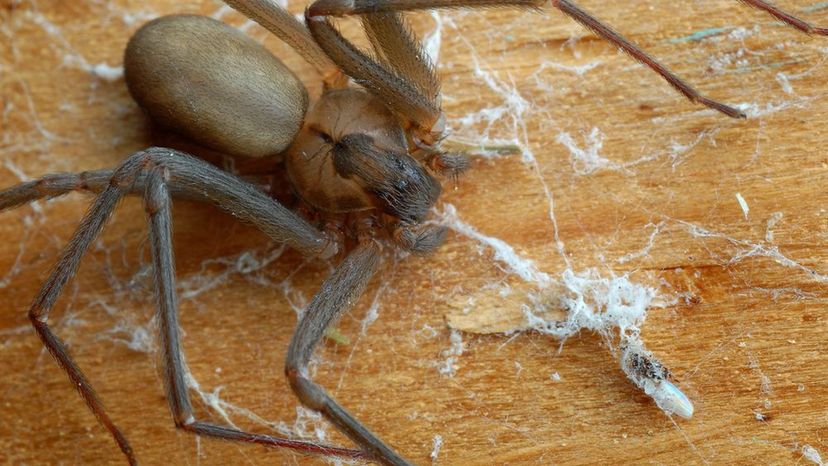
n/a
Which dangerous spider is shown in this image?
Brown Recluse
Although called "brown,†their colors can be anywhere from whitish to dark brown to blackish gray. Those bitten by the Brown Recluse Spider may need to seek medical attention to counter the effects of its venom.
California Trapdoor Spider
Spotted Orb Weaver
Venusta Orchard Spider
Advertisement

shutterstock
Which dangerous reptile is shown in this image?
Anatolian Viper
American Alligator
The American Alligator is a modern day dinosaur. This species is said to be over 150 million years old and survived the extinction of the dinosaurs 65 million years ago. The American Alligator also survived more recent endangerment and is now thriving in the fresh waters of Florida and Louisiana.
Leopard Gecko
Yangtze Mamushi
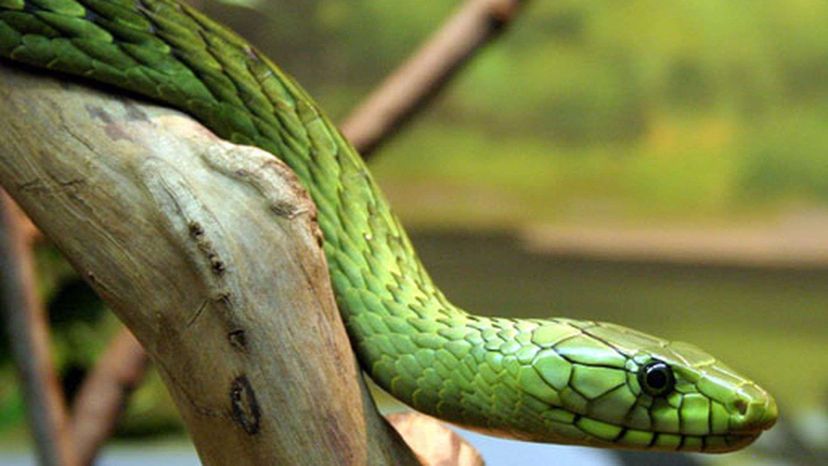
WikiCommons
Which dangerous reptile is shown in this image?
Cottonmouth
Western Green Mamba
The Western Green Mamba is native to West Africa. It lives in tropical and woody areas. The toxicity of its venom can vary tremendously, depending on where it lives and what it eats.
Bothrops Jararaca
Fer-de-lance
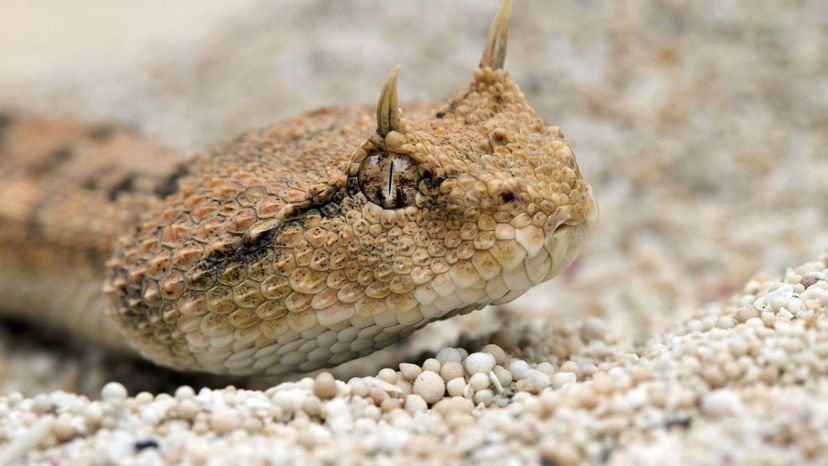
Shutterstock
Which dangerous reptile is shown in this image?
Horned Viper
Horned Vipers are ecologically important because they keep a number of rodents under control. They are a smaller snake variety, size maxing around 2 feet. Despite their small size, they can survive 14 to 18 years in the wild!
Mojave rattlesnake
Terciopelo
Eastern Brown Snake
Advertisement

n/a
Which dangerous animal is shown in this image?
Chameleon
Bullet Ant
Fossa
Wolverine
The wolverine is also called a skunk bear, but despite its bear-like looks, it is closely related to the weasel. Like the skunk, the wolverine has a strong smelling musk it uses to warn others to stay away. This animal is a good climber, but it sleeps and gives birth on the ground.
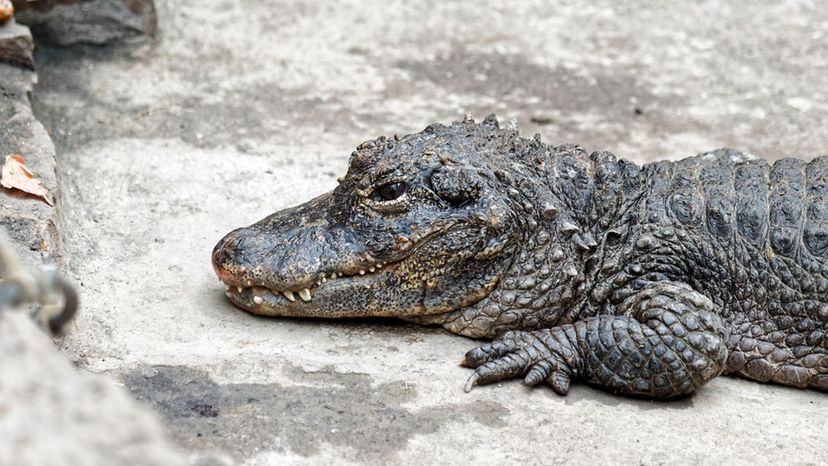
shutterstock
Which dangerous reptile is shown in this image?
New Guinea Crocodile Skink
Malayan Gharial
Chinese Alligator
The Chinese Alligator's snout is slightly more upturned and tapered than that of its counterpart, the American Alligator. It is also one of the most endangered and smallest of the crocodilian family.
Ornate Box Turtle

shutterstock
Which dangerous reptile is shown in this image?
Warren's Girdled Lizard
Yacare Caiman
The common name for the Yacare is the Piranha Caiman. This is because of its large teeth, which are visible even when its mouth is closed. Oh, and it also eats piranha.
Arakan Forest Turtle
Banded Gila Monster
Advertisement

Shutterstock
Which dangerous reptile is shown in this image?
Jararaca
Green mambas
Inland taipan
Forest Cobra
The Forest Cobra is the second largest species of Cobra on earth, measuring upwards of 7 feet! When in captivity, they become very aggressive and dominating, perhaps due to their large size.
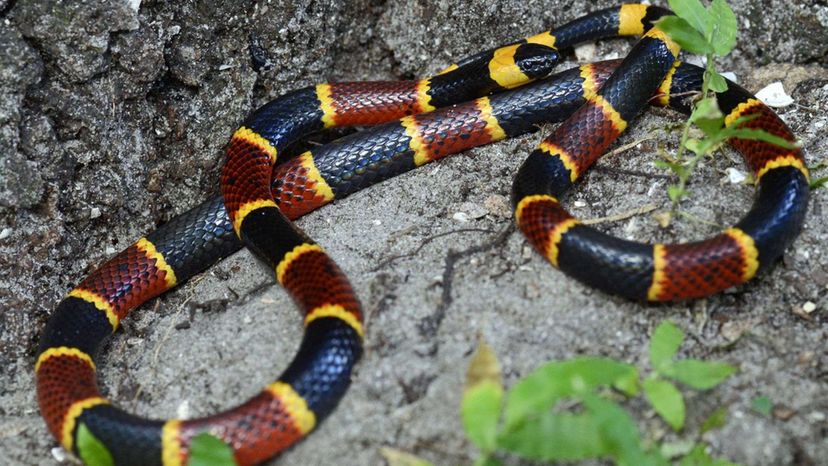
Shutterstock
Which dangerous reptile is shown in this image?
Yellow-Bellied Sea Snake
Copperhead
Eastern Coral Snake
Infant Coral Snakes hatch from eggs laid by the female snake. Coral Snakes do not give birth to live young like many of the other North American venomous snakes. At birth, Coral Snakes are seven inches long and are already at their full venomous potential.
Water Snake
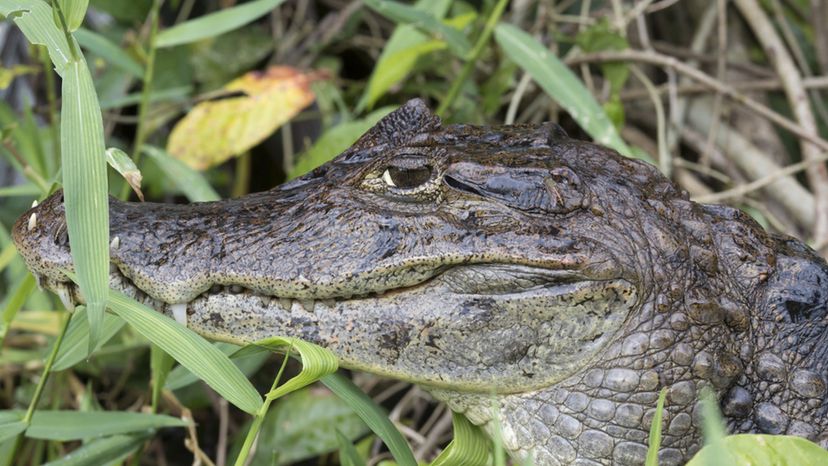
shutterstock
Which dangerous reptile is shown in this image?
Malayan Gharial
Warren's Girdled Lizard
Spectacled Caiman
The spectacled caiman is named for the bony ridge on its brow that makes it look like it is wearing spectacles. It is said to be the most variable since it has at least four subspecies, one of them being the Yacare caiman.
Burmese Python
Advertisement
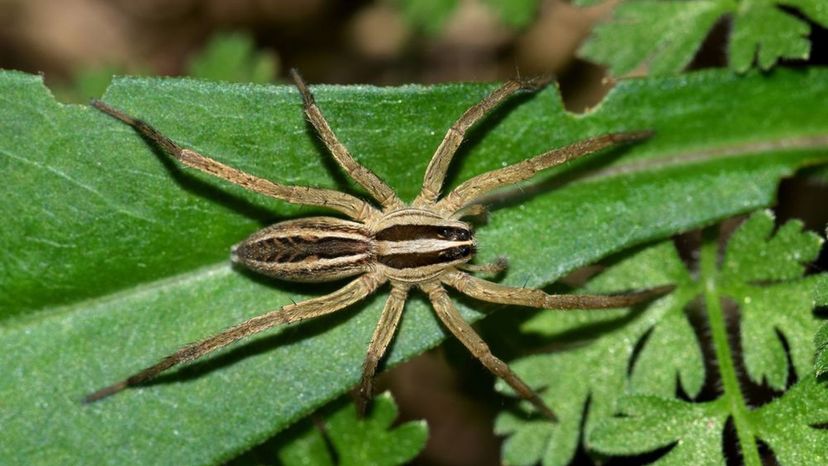
Shutterstock
Which dangerous spider is shown in this image?
Cross-spider
Orb Weaver
Wolf Spider
Keen eyesight and the tendency to live and hunt alone are a couple of the characteristics of the Wolf Spider. They are also known to hunt down and pounce on their prey.
Bark Crab Spider
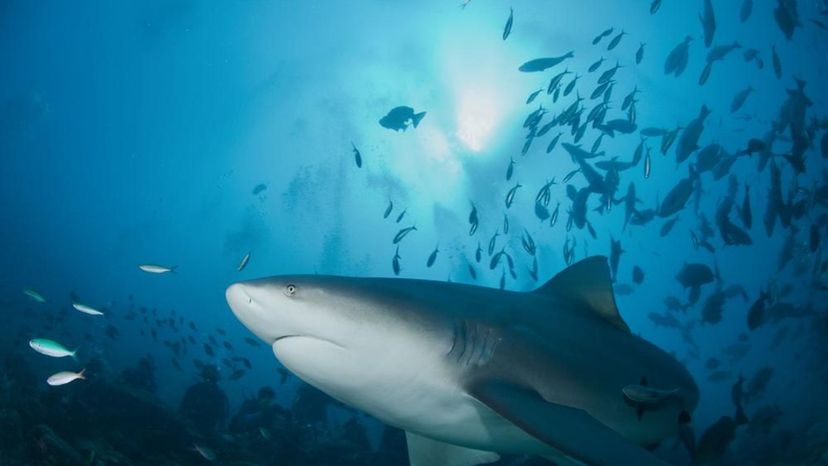
shutterstock
Which dangerous shark is shown in this image?
Frilled Shark
Shortfin Mako Shark
Bull Shark
Bull sharks are known to be aggressive and are the most dangerous to humans. They get the name bull shark from their stocky appearance and for their tendency to "bull rush†swimmers, divers and surfers alike.
Broadnose Sevengill
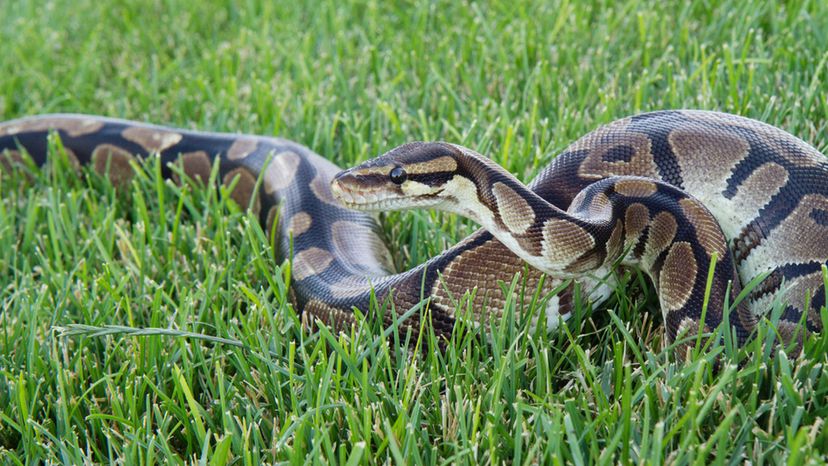
shutterstock
Which dangerous reptile is shown in this image?
Timber Rattlesnake
Ball Python
Ball pythons are common pets for snake owners. They get their name from the way they curl up like a ball in order to take their defensive position.
Prairie King Snake
Leopard Gecko
Advertisement
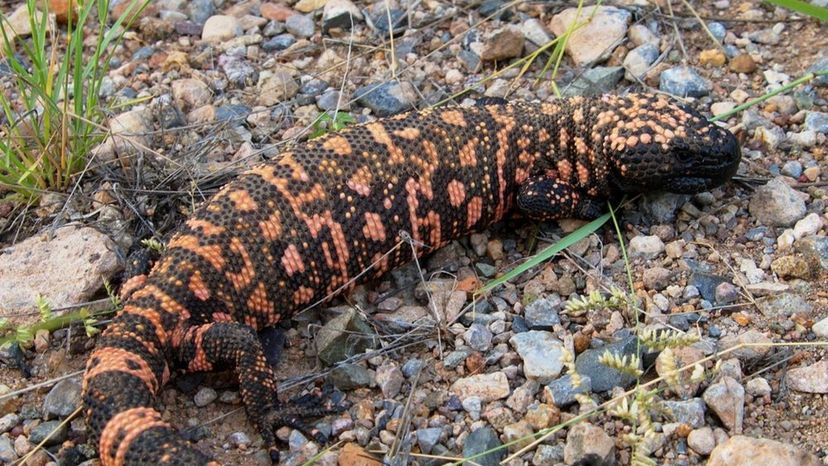
shutterstock
Which dangerous reptile is shown in this image?
Banded Gila Monster
The Banded Gila Monster is one of the very few venomous lizards of the world. It poisons its target by chewing on it and allowing the poison to flow through the grooves in its teeth and into the flesh wounds.
American Alligator
Mexican Beaded Lizard
Dwarf Caiman
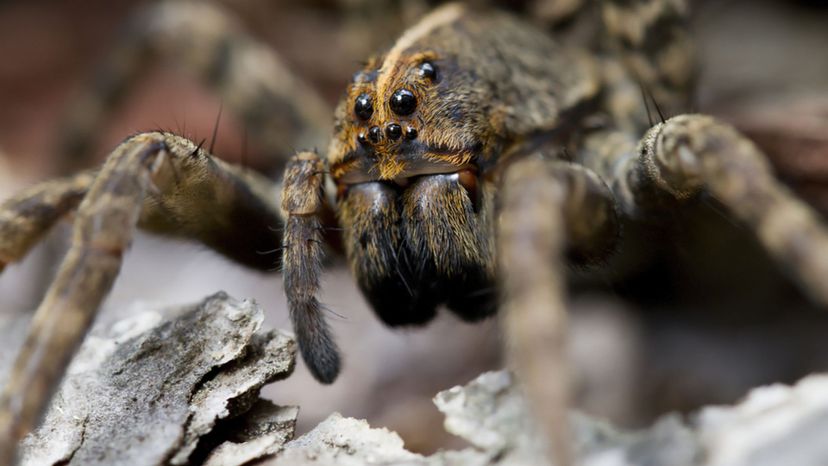
Shutterstock
Which dangerous spider is shown in this image?
Giant Crab Spider
Carolina Wolf Spider
These solitary hunters do not spin webs, preferring instead to actively hunt down their prey. The Carolina Wolf Spider is thought to be the largest of the Wolf Spiders throughout North America. It has been singled out as the official spider of South Carolina.
Sowbug Killer Spider
Silver Garden Spider
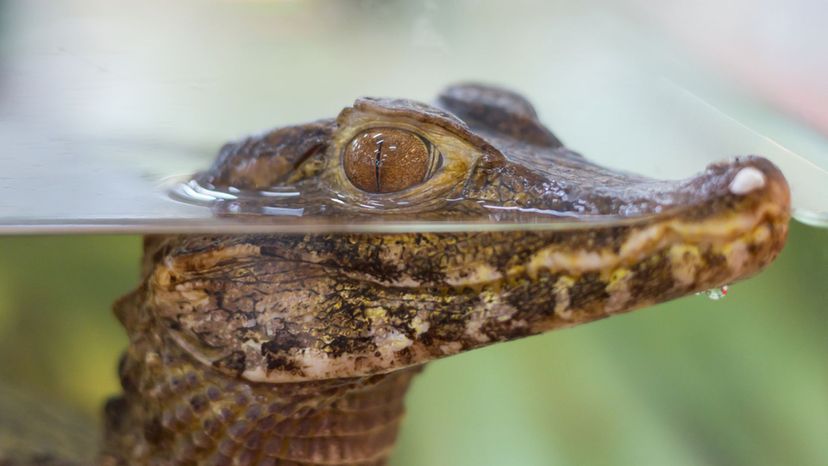
shutterstock
Which dangerous reptile is shown in this image?
New Guinea Crocodile Skink
Dwarf Caiman
The Dwarf Caiman is the smallest of crocodiles. A large male may grow to 1.6 meters, and a female to 1.2 meters.
Anatolian Viper
Mexican Beaded Lizard
Advertisement

shutterstock
Which dangerous shark is shown in this image?
Megamouth Shark
Thresher Shark
The thresher shark has an unusually long tail, as long as the shark itself, often used as a weapon against its prey. Thresher sharks are known to be rogues, preferring to spend their lives solo.
Tiger Shark
Great White Shark

shutterstock
Which dangerous reptile is shown in this image?
Central Asian Cobra
Brazilian Rainbow Boa
These boas can live to be 20 years old. They are non-venemous -- they constrict their prey.
Moorish Viper
Anatolian Viper
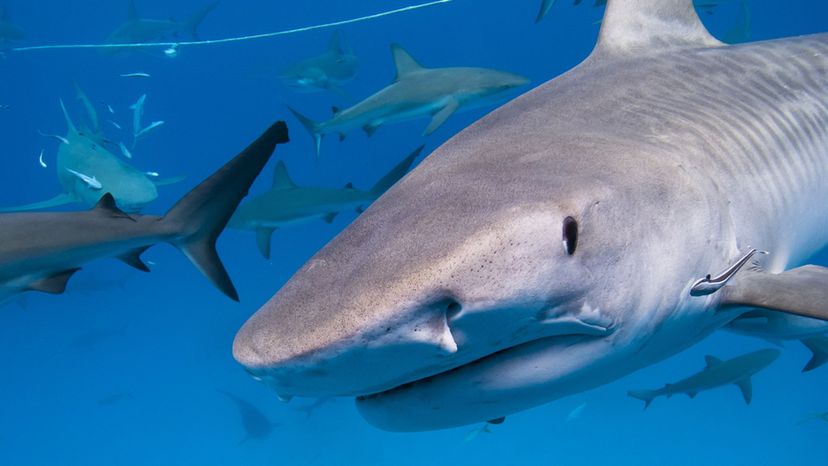
shutterstock
Which dangerous shark is shown in this image?
Horn Shark
Tiger Shark
Watch out, this shark can be up to 13 feet long and weigh up to 1,400 pounds! Why is it called a tiger shark? Young ones have stripes that look like those on a tiger. This shark is aggressive in terms of attacking people.
Angel Shark
Hound Shark
Advertisement
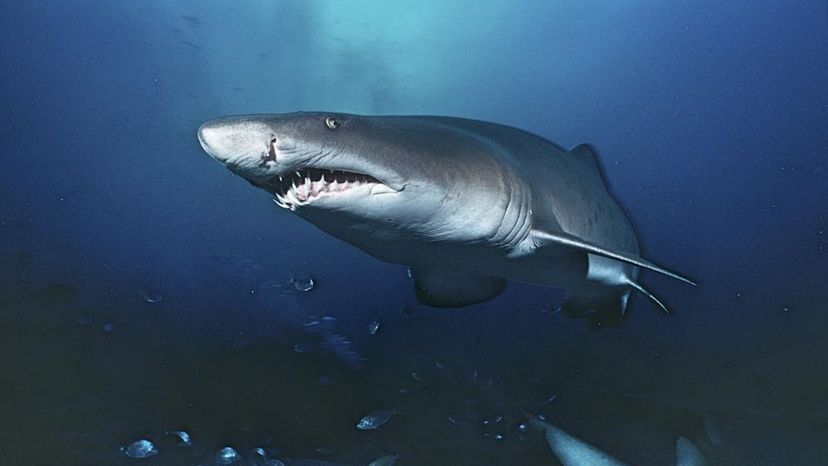
shutterstock
Which dangerous shark is shown in this image?
Sand Tiger Shark
Did you know that the sand tiger shark gets its name for its incredible appetite, not a series of stripe markings on its exterior? The sand tiger hunts at night and prefers subtropical temperatures. It is the only shark that comes to the surface to gulp air.
Thresher Shark
Smooth-hound Shark
Wobbegong Shark
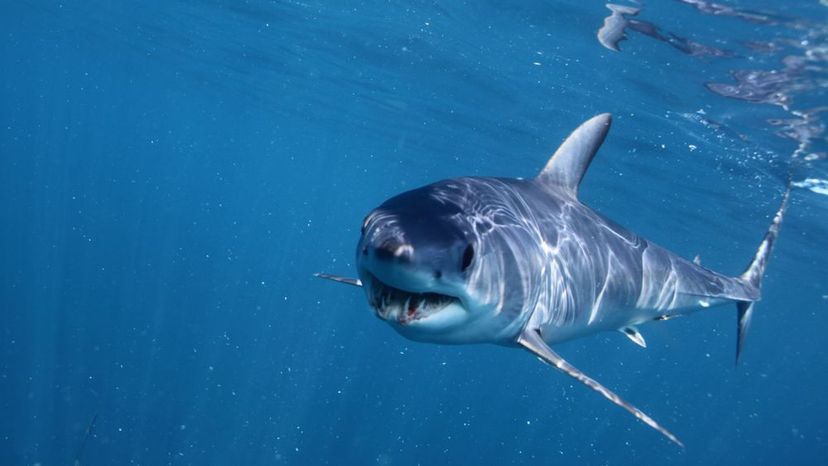
shutterstock
Which dangerous shark is shown in this image?
Grey Reef Shark
Caribbean Reef Shark
Hound Shark
Shortfin Mako
The shortfin mako shark is easily identified by mean looking teeth, which are visible even when its mouth is closed. The mako shark looks like a smaller version of a great white shark. It's possibly the fastest-swimming of all sharks.
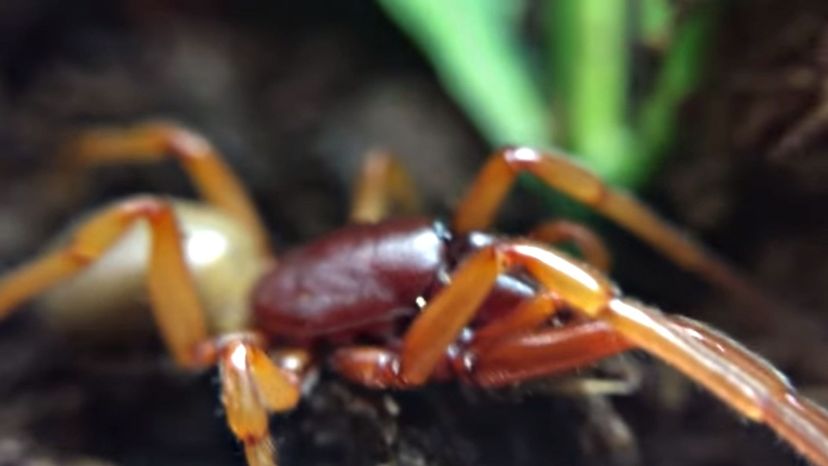
n/a
Which dangerous spider is shown in this image?
Sowbug Killer Spider
Sowbugs (aka woodlice) may be tough little pests, but they are no match for the Sowbug Killer Spider which views them as regular prey. These spiders live close to their food source, so you can find them under rocks and logs or in leaf litter.
Spined Micrathena Spider
Parson Spider
Giant Crab Spider
Advertisement
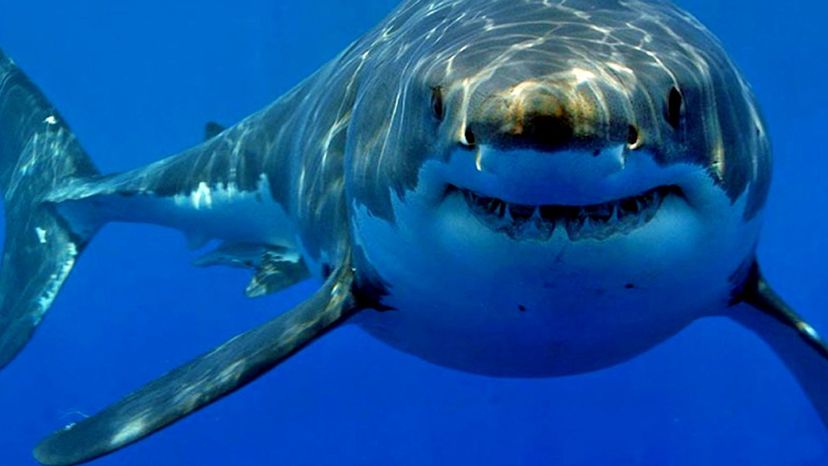
YouTube
Which dangerous shark is shown in this image?
Thresher Shark
Great White Shark
Great White Shark
Great white sharks are known to cause human fatalities. But even though sharks can be dangerous, humans are more harmful to sharks than the other way around, due to over-fishing.
Hammerhead Shark
You Got:
/50
Shutterstock
